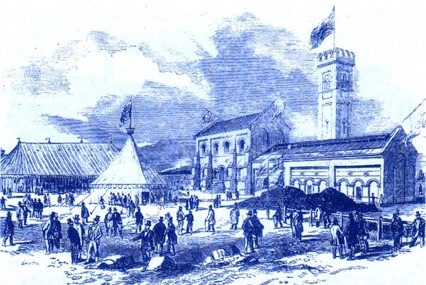Welcome to our in-depth exploration of waterworks architecture in the United Kingdom. In this article, we will delve into the forgotten tales and untold stories of these remarkable structures that have played a vital role in shaping the nation’s water supply system. From grand Victorian engineering marvels to modern architectural wonders, we will uncover the rich history, unique designs, and remarkable engineering feats that make these waterworks a significant part of the UK’s heritage.
The Birth of Waterworks Architecture
Waterworks architecture in the UK traces its roots back to the 19th century when the industrial revolution was at its peak. As the population grew rapidly, the demand for clean and accessible water became a pressing issue. This led to the construction of a vast network of waterworks throughout the country, encompassing reservoirs, pumping stations, treatment plants, and intricate distribution systems.
Victorian Engineering Marvels
During the Victorian era, waterworks architecture reached its zenith, showcasing remarkable engineering skills and architectural finesse. Grand reservoirs, such as the iconic London Waterworks Company reservoir in Stoke Newington, became symbols of the era’s progress. These massive structures, often adorned with ornate facades and towering columns, were not only functional but also stood as magnificent landmarks in their respective regions.
The Rise of Pumping Stations
Pumping stations played a crucial role in the water supply system, ensuring that water reached every corner of the UK. These architectural gems were designed to house powerful steam engines or, later, electric pumps. One such notable example is the Crossness Pumping Station in London, with its stunning cast-ironwork and intricate detailing. These stations not only showcased the technological advancements of the time but also celebrated the aesthetic beauty of industrial architecture.
Art Deco and Modern Marvels
As the 20th century unfolded, waterworks architecture embraced the Art Deco movement, characterized by sleek lines, geometric patterns, and a sense of modernity. The Metropolitan Water Board’s headquarters in London, designed by architect Herbert Austen Hall, is a prime example of this architectural style. With its striking facade and innovative design, it remains an iconic symbol of the era.
Preservation and Restoration Efforts
In recent years, there has been a growing recognition of the historical and cultural significance of waterworks architecture. Conservation and restoration efforts have taken place to preserve these structures for future generations to appreciate. Organizations such as the Waterworks Heritage Trust tirelessly work towards safeguarding these architectural treasures, ensuring that their stories are not forgotten.
Exploring Forgotten Tales
Exploring waterworks architecture across the UK unveils fascinating tales that often go untold. From the challenges faced by engineers in constructing vast reservoirs to the innovative techniques employed in pumping stations, each structure has a unique story to tell. Furthermore, the influence of waterworks architecture on urban planning and development cannot be understated, as these structures played a pivotal role in shaping the growth of cities and towns.
Conclusion
Waterworks architecture in the UK stands as a testament to the nation’s engineering prowess and architectural heritage. These forgotten tales of grand Victorian reservoirs, elegant pumping stations, and modern marvels deserve to be unearthed and celebrated. By exploring the untold stories and rich history of waterworks architecture, we can gain a deeper appreciation for these remarkable structures that have shaped the UK’s water supply system. Let us remember and cherish these forgotten tales, ensuring that they remain a vital part of our collective memory and heritage.
